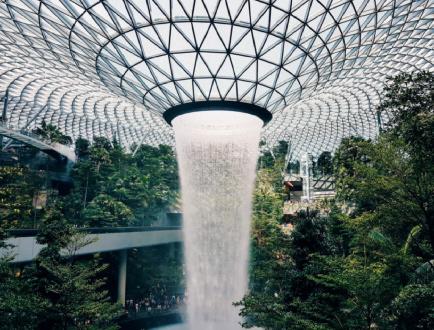INTERVIEW
PLANNING AHEAD: A CAUTIONARY TALE
W
ith the development of greenspace in cities on the rise, the increasing importance being placed on streetscapes and concerns about climate change pushing green infrastructure, the scale of landscaping projects continues to grow bigger. To help landscapers, architects and contractors to understand how grow contracts can help deliver projects on time and on budget, Outdoor Design Source dives in with advanced tree specialists Speciality Trees to get the inside track. Q. Why is contract growing so important for commercial/civil projects? A. Ordered 12 months to 24 months out, contract growing ensures that stock required for a project is grown to specification and delivered to site when required. Placing the order at the start of the process is a more cost-effective and worry-free alternative to buying large numbers at the time of planting. Contract growing can also ensure the aesthetic architectural vision of the project is maintained, particularly if greenlife needs to be of a certain size or provenance. Q. What is the process of plant selection for large-scale projects and what part do companies like Speciality Trees play in this process? A..Generally, plant selection is determined by the landscape architect, but only via a process of consultation with greenlife suppliers like Speciality
74 | ODS Exemplary Showcase
Trees can real numbers and specific species for a given time frame be secured against the plan. A reputable grower can advise on close substitutes that may be able to be grown or sourced, so their knowledge of species and optimal growing conditions is invaluable. Q. How early should a contractor/landscaper be thinking about their greenlife? A. Ideally the earlier in the planning process the better. We suggest 18 to 24 months as optimal for contract growing of advanced material. Flexibility in plant selection may need to be accommodated if the timeframe is shorter than this. Under six months, the issue becomes one of project fulfilment with what is available in the marketplace. Leaving sourcing to the last minute may also result in lower material quality, which in turn may be problematic once planted out. Q. What are the challenges that can impact an advanced order? A. As plants and trees are living things, the biggest challenge to supply is the impact of large delivery delays of material grown to an agreed time schedule. For contract growing to work, with material supplied to intended design and budget, all parties need to communicate and understand the process in order to navigate any changes required to material and supply parameters.
Q. What is the most important factor contractors/landscapers need to consider when approaching a contract grow? A. All councils set annual tree planting targets, with some able to project or estimate their future tree requirements in line with population growth and community expectation. Many have precinct plans that offer a palette of preferred species mixed with greater species diversity to minimise risk. Combine this planning with computerised tree mapping systems and you have a well thought out succession plan for trees. Based on current forecasts and the renewed focus on increasing green within the community, it is highly probable that production nurseries will struggle to grow enough trees to fulfil market demand, particularly if sourcing is done when the contractor is ready to dig the hole. Councils often have long term tree planting and maintenance contracts in place but few have contracts in place for the reliable and timely supply of tree material to plant. This situation is true for landscapers and developers too. Unless this cycle changes, contractors will continue to find sourcing trees difficult and timeconsuming, and often will be forced to settle on material that is of lower quality, bringing with it a higher propensity to fail in the landscape. High replacement rates can make this a very costly scenario. Contact growing aims to make supply more reliable and cost effective.














































